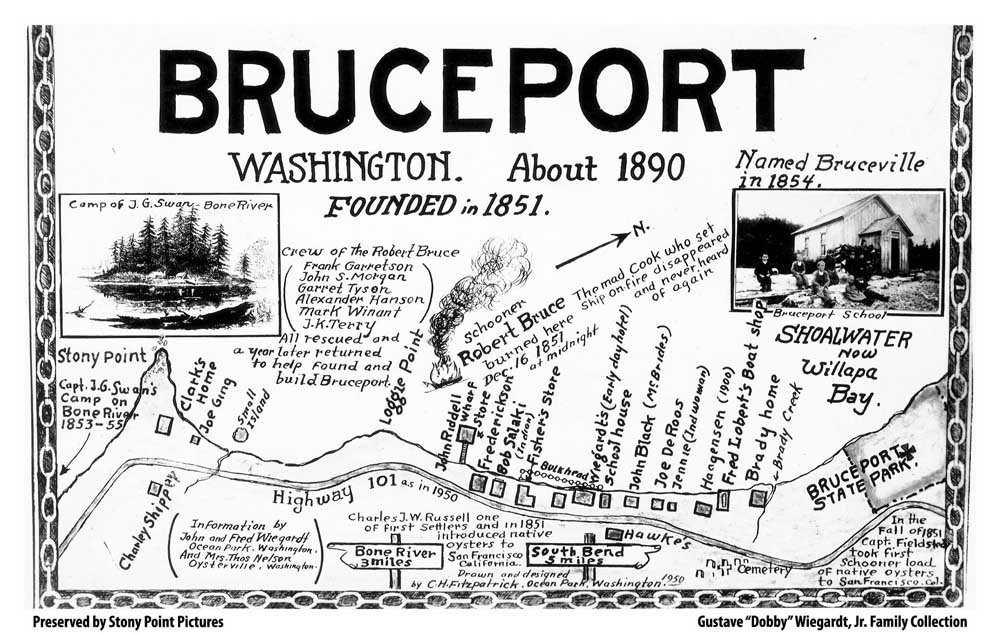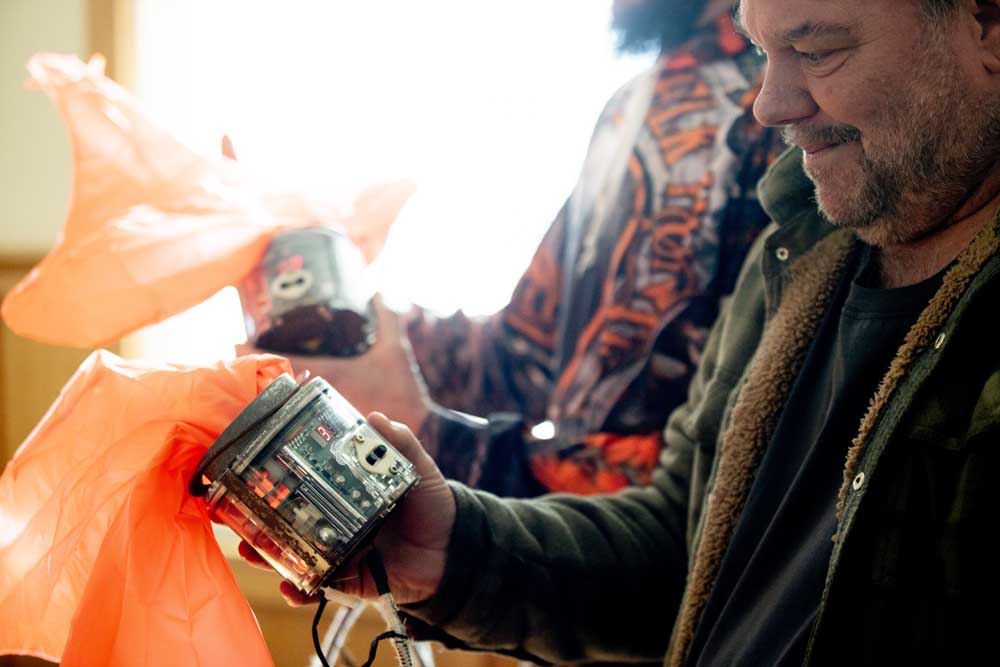Saints or Sinners? Characters of Pacific County: Frank Garretson, Last of ‘The Bruce Boys’
Published 4:50 pm Sunday, December 29, 2024

- Bruceport, an early Shoalwater Bay community was located on the shoreline between South Bend and Bay Center, 1851-1895. Before arrival of white settlers, the site was an Indian village called “Wa-Hoot-San” or “Hwa’hots.” First named Bruceville, it was the county seat of Chehalis County (renamed Grays Harbor County in 1915) from 1854-1860.
Frank Garretson 1826 — 1905
PIONEER DEAD: Frank Garretson, Last of “The Bruce Boys,” Passes Away
So reads the first-page headline in the South Bend Journal, Vol.16 — though the story fragment does not include the date. Fortunately, the article was picked up by the Feb. 25, 1905 edition of The Tacoma Daily Ledger and also by the Feb. 27, 1905 edition of the Evening Standard of Walla Walla — in addition to summaries in other newspapers — making it clear that Francis “Frank” Garretson died on Monday, Feb. 20, 1905.
However, additional details about Mr. Garretson are few — just that “he was born on Staten Island New York, in 1826, that he lived in Brooklyn until 1850 when he crossed the isthmus and landed in San Francisco.” My understanding is that he was, like 300,000 others before him, headed for the gold fields. He found the competition fierce, the work difficult and the provisions meager. It apparently didn’t take young Frank long to return to San Francisco and look for other opportunities.
He made for the docks, for his experience had included some fishing and oystering on the East Coast. He soon joined forces with five like-minded men — Garrett Tyson, Alexander Hansen, Mark Winant, John S. Morgan, and J.K. Terry, Commander. (Some accounts say the group consisted of Frank plus Mark and Sam Winant, John Morgan, Dick Milward, J.K. Terry, and Captain Alexander Hanson.) They pooled their resources and bought the Robert Bruce, an 82-foot, two-masted schooner of 129 tons. And, they hired a cook named Jefferson, the only “crew member aboard” whose resentment at being treated as a servant was very nearly the undoing of the entire venture.
Schooners coming north for oysters carried as ballast redwood lumber and fieldstone and any frippery of civilization, from top hats to prostitutes, that the fancy of an oysterman could conjure up. Yes! In 1853, all Shoalwater Bay was the Bruce Boys’ oyster!
When they finally dropped anchor in Shoalwater Bay (near the area that would eventually become Bruceport named for their ill-fated ship). they lounged about while Jefferson prepared a celebratory meal — well-laced with laudanum, as it turned out. About one in the morning of Dec. 12, Bill McCarty, the only white man living on that side of the bay, was wakened by an Indian boy who saw flames. As they rushed to the ship, they saw a figure crouched in the stern of a small boat, floating away on the outgoing tide. Jefferson! Never to be seen again.
McCarty and the Indian roused the crew members, one-by-one assisted them to shore where they watched (and cursed!) as their ship burned to water level. Capt. Hanson returned to San Francisco to secure another ship leaving the others to survive the best they could with the only provisions they had salvaged — one barrel of hardtack, one of dried apples, and the fateful medicine chest. On his return, Hanson found that the boys had spent their time piling up more prime oysters than the hold of his ship had space for. There they stayed in “Bruce Camp” which then became “Bruceville,” the first settlement on the bay and, briefly, the county seat of Chehalis County.
By 1853, a peach basket filled with oysters brought a dollar in gold on delivery to a schooner anchored in Shoalwater Bay — a schooner which might hold up to 2,000 baskets. That same basket brought $10 on arrival in San Francisco and epicures in oyster bars and seafood restaurants there would pay a silver dollar for one oyster — an oyster smaller than the dollar! Schooners coming north for oysters carried as ballast redwood lumber and fieldstone and any frippery of civilization, from top hats to prostitutes, that the fancy of an oysterman could conjure up. Yes! In 1853, all Shoalwater Bay was the Bruce Boys’ oyster!
Soon, though, the “boom” was on and competition increased. Some of the Bruce Boys went into partnerships, some took their earnings and went home. Frank Garretson moved to Oysterville in 1866 — perhaps to be closer to Mary Douglas whom he had noticed long ago when her father brought her, then just eight years old, across the bay to Bruceville to the only doctor in the area and who readily cured her blindness. “A miracle!” everyone said.
By the 1880 census, Frank (54) was listed as a fisherman, living in Oysterville with his wife Mary (34), and their five oldest children — Lucy (12), Edger (10), Helen (7), Alfred (5), and Isabel (3). Irene, who later married Tommy Nelson and lived just south of the church, was born in 1879 — perhaps too late for the census count. Bill, born in 1885 is still remembered as one of the players on the legendary 1905 Nahcotta baseball team.
Perhaps there are still descendants of John and Mary Garretson in the area. Perhaps they have stories to tell about their ancestor who, according to the editor of that 1905 South Bend Journal, “…was a walking history of the early days; his memory was excellent and his tales of early times were interesting and accurate.”
If only Frank had clarified, for once and for all — exactly who were the Bruce Boys?









